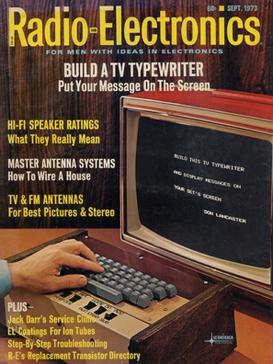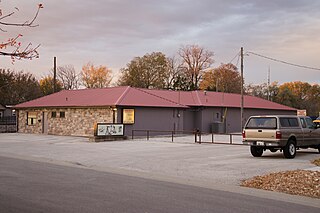
The MOS Technology 6502 is an 8-bit microprocessor that was designed by a small team led by Chuck Peddle for MOS Technology. The design team had formerly worked at Motorola on the Motorola 6800 project; the 6502 is essentially a simplified, less expensive and faster version of that design.

The 6800 is an 8-bit microprocessor designed and first manufactured by Motorola in 1974. The MC6800 microprocessor was part of the M6800 Microcomputer System that also included serial and parallel interface ICs, RAM, ROM and other support chips. A significant design feature was that the M6800 family of ICs required only a single five-volt power supply at a time when most other microprocessors required three voltages. The M6800 Microcomputer System was announced in March 1974 and was in full production by the end of that year.

The Motorola 6809 ("sixty-eight-oh-nine") is an 8-bit microprocessor with some 16-bit features. It was designed by Motorola's Terry Ritter and Joel Boney and introduced in 1978. Although source compatible with the earlier Motorola 6800, the 6809 offered significant improvements over it and 8-bit contemporaries like the MOS Technology 6502, including a hardware multiplication instruction, 16-bit arithmetic, system and user stack registers allowing re-entrant code, improved interrupts, position-independent code and an orthogonal instruction set architecture with a comprehensive set of addressing modes.
Microware Systems Corporation was an American software company based in Clive, Iowa, that produced the OS-9 real-time operating system.

The Kansas City standard (KCS), or Byte standard, is a data storage protocol for standard cassette tapes at 300 bits per second. It originated in a symposium sponsored by Byte magazine in November 1975 in Kansas City, Missouri to develop a standard for the storage of digital microcomputer data on inexpensive consumer quality cassettes. The first systems based on the standard appeared in 1976.

Southwest Technical Products Corporation, or SWTPC, was an American producer of electronic kits, and later complete computer systems. It was incorporated in 1967 in San Antonio, Texas, succeeding the Daniel E. Meyer Company. In 1990, SWTPC became Point Systems, before ceasing a few years later.

FLEX is a discontinued single-tasking operating system developed by Technical Systems Consultants (TSC) of West Lafayette, Indiana, for the Motorola 6800 in 1976.
UniFLEX is a Unix-like operating system developed by Technical Systems Consultants (TSC) for the Motorola 6809 family which allowed multitasking and multiprocessing.

Daniel Meyer was the founder and president Southwest Technical Products Corporation. He was born in New Braunfels, Texas, and raised in San Marcos, Texas, where he earned a bachelor's degree in mathematics and physics in 1957 from Southwest Texas State. After college he married Helen Wentz, moved to San Antonio and became a research engineer in the electrical engineering department of Southwest Research Institute.
Ohio Scientific, Inc., was a privately owned American computer company based in Ohio that built and marketed computer systems, expansions, and software from 1975 to 1986. Their best-known products were the Challenger series of microcomputers and Superboard single-board computers. The company was the first to market microcomputers with hard disk drives in 1977.

The SS-50 bus was an early computer bus designed as a part of the SWTPC 6800 Computer System that used the Motorola 6800 CPU. The SS-50 motherboard would have around seven 50-pin connectors for CPU and memory boards plus eight 30-pin connectors for I/O boards. The I/O section was sometimes called the SS-30 bus.

The TV Typewriter is a video terminal that could display two pages of 16 lines of 32 upper case characters on a standard television set. The design, by Don Lancaster, appeared on the cover of Radio-Electronics magazine in September 1973.
John Alexander Coll was a British computer specialist. While teaching physics at Oundle school he built a number of computers and was involved in Micro Users in Secondary Education (MUSE). He helped write the functional description for the BBC Computer and played an important role in convincing senior management at the BBC that it could be done. He later wrote the BBC Microcomputer User Guide which was supplied by Acorn Computers with the BBC Micro and appeared regularly on the television programmes Making the Most of the Micro and Micro Live which featured the computer.
Each time Intel launched a new microprocessor, they simultaneously provided a system development kit (SDK) allowing engineers, university students, and others to familiarise themselves with the new processor's concepts and features. The SDK single-board computers allowed the user to enter object code from a keyboard or upload it through a communication port, and then test run the code. The SDK boards provided a system monitor ROM to operate the keyboard and other interfaces. Kits varied in their specific features but generally offered optional memory and interface configurations, a serial terminal link, audio cassette storage, and EPROM program memory. Intel's Intellec development system could download code to the SDK boards.
Smoke Signal Broadcasting, Inc. (SSB), later known as Smoke Signal, was an American computer company founded in 1976 by Frederic Jerome "Ric" Hammond of Hollywood, California. The company earned its reputation by offering expansions for the Southwest Technical Products (SWTPC) 6800 microcomputer. It later manufactured its own line of computers, called the Chieftain. Though it remains little-known, Smoke Signal was an early and important manufacturer of multi-user computer systems.

The Dimension 68000 is a microcomputer introduced by the Micro Craft Corporation in 1983 that sought to emulate the Apple II, the IBM PC, and various CP/M-centric computers through a family of coprocessor expansion cards and emulation software. The Dimension 68000 can also run as a standalone computer based on the Motorola 68000 from which it gets its namesake. The computer is mostly the brainchild of Mike Carpenter, a former executive of a scientific instrument manufacturer who incorporated Micro Craft in Dallas, Texas, to develop the Dimension 68000. It had a market lifespan of three years and received mixed, mostly positive, reception from the technology press. Criticism was leveled at the $6,250 price tag for the computer with the full deck of coprocessor cards, as well as the extent of the emulation power of those cards.
Parasitic Engineering, Inc., was an American computer company founded by Howard Fullmer and Gene Nardi in 1974. Named as a tongue-in-cheek reference to a comment by MITS co-founder Ed Roberts, Parasitic's first products were hardware upgrade kits to MITS' Altair 8800 microcomputer kit, improving the latter's power supply rating and susceptibility to noise. The company later released their own microcomputer based on the same bus as the Altair, the S-100, but it was less popular than the company's hardware-improvement kits. By 1979, the company had pivoted to providing upgrades to Tandy's TRS-80. Parasitic went defunct in 1983.

Midwest Scientific Instruments, Inc. (MSI), often shortened to Midwest Scientific, was an American computer company founded in Olathe, Kansas, in the early 1970s. Charles C. Childress, a doctorate of biochemistry, founded the company as a way to market his data acquisition and processing interfaces based on programmable calculators for medical, scientific, and industrial uses. After an after-market floppy drive system for the SWTPC 6800 proved a hot-seller for Midwest in 1976, the company began products for general-purpose computers like the SWTPC. In 1977, they released their own microcomputer, the MSI 6800—a clone of the SWTPC 6800. Their sales tripled that year and prompted expansion in the Kansas City area. It survived into the mid-1980s before going defunct and having its remaining assets auctioned off.
Gimix, Inc., was an American electronics and computer company based in Chicago, Illinois, founded by Robert C. Philips. Established in 1975, the company was initially Philips's vehicle for selling his various remote-controlled devices he had developed as the result of a life-long interest in electronics and experiments with home automation for himself and other clients. In 1979, the company introduced the first in a series of 68xx-based microcomputers dubbed the Ghost. It proved successful among various businesses and universities and allowed the company to survive into at least the early 1990s.
The ACFA-8 was a microcomputer based on the Motorola 6808. It was released in 1979 by Andrew M. Veronis, a doctorate of computer science more well-known for his books on computer engineering.













